Top Photo: Pine sphinx moth caterpillar.
Three Moths (including specimen above)
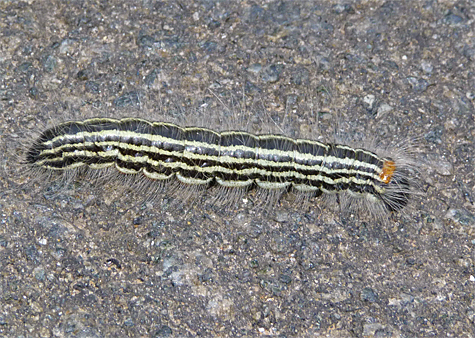
The caterpillar in the above photo probably just crawled down out of an oak tree and is in search of a safe place to pupate which, reportedly, may take two or more years. (?)
If you’ve never heard of a sphinx moth, you’ve probably seen one. The tobacco hornworm is a sphinx moth caterpillar. The moth in the photo below is a Pandora’s sphinx moth (Eumotpha pandoras), all grown up.
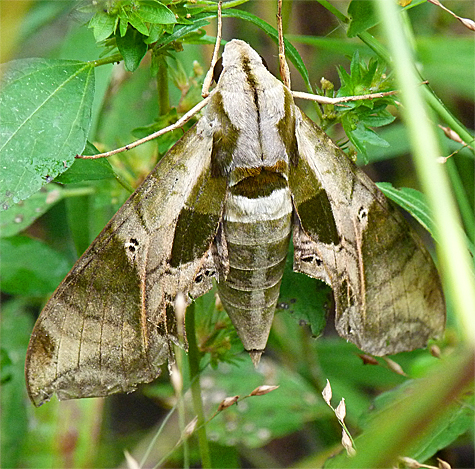
The caterpillars of the Pandora’s sphinx eat pepper vine, grape, and Virginia creeper. I’m not sure about pepper vine but there were plenty of grape and creeper vines in close proximity to where this moth was spotted at Into the Mist in Catch the Wind.
Three Butterflies
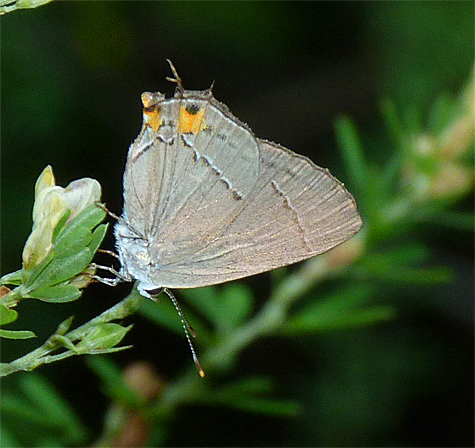
Common and widespread in distribution, your chances of seeing a gray hairstreak are probably greater than running into any of the other hairstreaks in our area. If you have a desire to differentiate the various hairstreak butterflies, this is the one to compare others to when trying to identify them. Get to know this one and when another hairstreak presents itself you’ll know you’re looking at something different, like the red-banded hairstreak below.
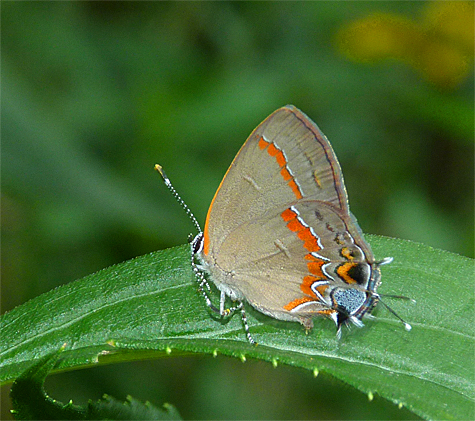
The red-banded above is fresh out of the chrysalis. Red-bandeds are smaller than gray hairstreaks and the red band across both fore and hind wings make it easy to separate the two.
And finally, while standing on the boardwalk gazing out at the Wetlands, I noticed something fluttering in the water below me. I thought at first it was a moth that had somehow ended up in the water. I was close, it was a butterfly, a silver-spotted skipper (Epargyreus clarus).
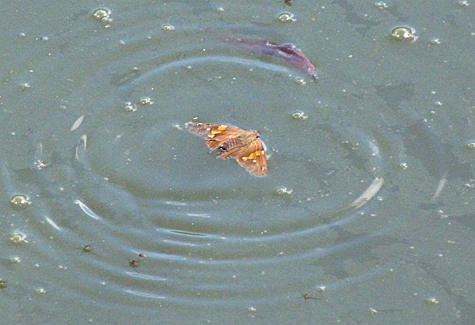
There was no way that I could have helped the unfortunate butterfly, even with the long net that I sometimes use to fish out sippy cups that find their way into the drink. The butterfly was just too far out to be saved.
Your Pandora’s sphinx is awesome! Only the 2nd I’ve seen.
I hadn’t seen a Pandora’s in probably 5 years or so. I wouldn’t have seen this one had it not been for the Landscape Techs here at the Museum, they stirred up the moth while they were weeding, and I happened to be standing there when they did it.